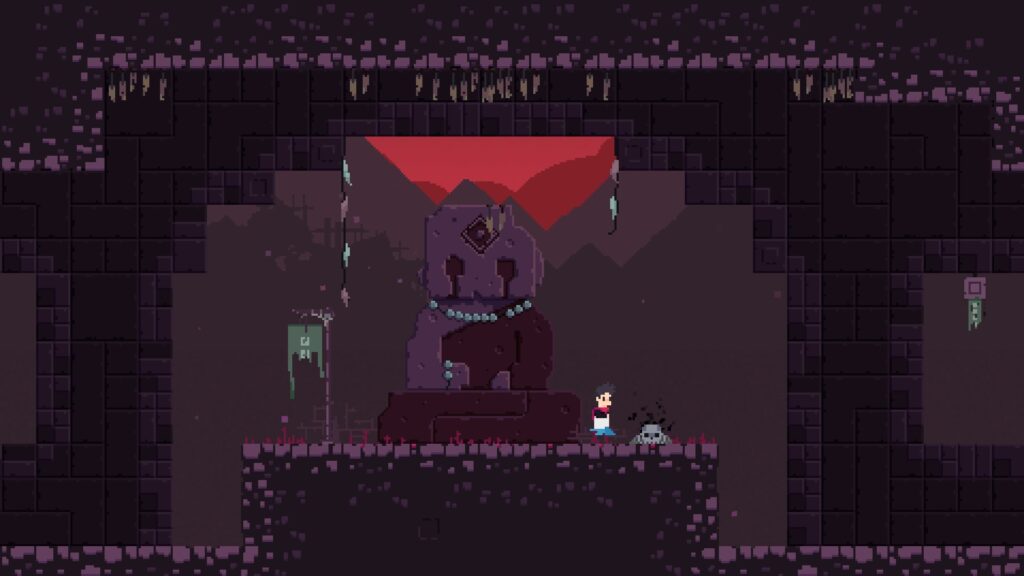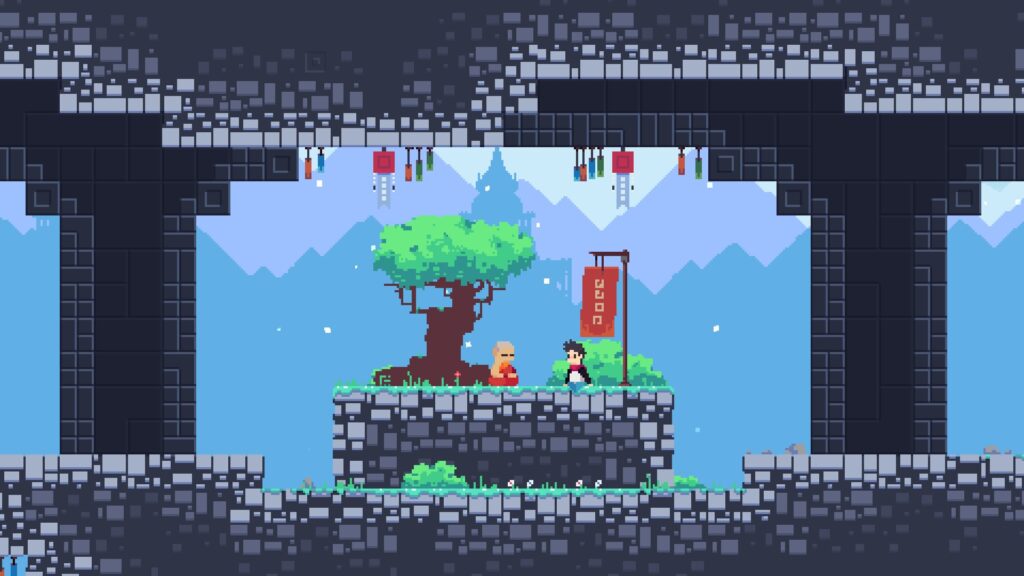
Developer: Studio Voyager, IguanaBee
Publisher: Untold Tales
Platform: PC, Switch, PS4, PS5, Xbox One
Tested on: PS4
What Lies in the Multiverse – Review
The multiverse theory has been popping up in several video games, movies, and tv shows for a while now. It’s the real-life theory that for each event, a separate universe branches off, giving us infinite realities from which we’re only experiencing one. What lies in those other universes can be of great fascination and is often explored in fiction, such is the case for the game we’re looking at today. What Lies in the Multiverse is a team-up between indie developers Studio Voyager and IguanaBee, and the game is published by Untold Tales. It’s time to explore the other side!
Story
At the start of the game, our protagonist is a simple kid sitting at home in his bedroom. He’s doing research into the multiverse theory on his computer and is specifically looking to simulate these other realities so he can explore them. He’s successful, ending up stuck in an alternate world between time and space. The Kid – as he’s never called anything else in the game – is quickly caught by Everett, an experienced reality hopper who keeps all the different universes from colliding with each other, while also solving problems wherever necessary. It’s his job to also keep candid explorers like our main character from being in a reality they don’t belong in. Everett brings The Kid back to his bedroom, but after having had a taste of adventure The Kid begs Everett to take him back as an assistant instead. Everett agrees, and thus begins their shared adventure across space and time. Interdimensional travel isn’t without danger though, and quickly things start to fall apart in new and unexpected ways.
The story is told mostly through dialogue and gameplay. The game doesn’t have many real cutscenes except for one near the opening, which comes with a whole exposition dump about the multiverse theory.
Graphics
What Lies in the Multiverse has charming pixel graphics, giving the game that nice retro look. The main theme of the game is traveling to different dimensions and meeting a cast of colorful characters along the way. Because of this, it makes sense that significant attention went into designing these places and people, and they all look amazing. As part of the gameplay, The Kid has an ability that allows him to shift from one reality into another at will, something which is also important for the visuals, since the design is a major way to distinguish these realities from each other. Usually one is rather peaceful and normal looking, while the other has a more ominous, scary aesthetic.
Sound
Just like the graphics, the music in this game has a distinctly old-school air to it. The soundtrack is filled with chiptune tracks, with the locations and characters often having their own distinct themes. Similar to what we mentioned with the dimensions looking different to set them apart, you might notice that even the background music changes subtly when you shift. The game has no voice acting, though the characters do make a (rather annoying) gibberish noise when talking.
Gameplay
What Lies in the Multiverse is a puzzle-platformer where your power to hop between dimensions at will plays a major part in the gameplay. Following Everett’s directions, you play as The Kid and explore various places with him, going from the woods to a bustling city. Every new location has its own problems to solve, usually done by talking to people and getting from point A to B. What makes getting to these places so interesting is that you essentially always have two dimensions to shift between.
Doors that are locked in one dimension might not be locked in another. The game is not extremely easy and you’ll have to master the controls a little, but soon you’ll be shifting mid-jump to create ledges where there weren’t any before. Puzzles work much the same, with pushable crates often only existing in one dimension and not in the other. This is also a story element, as shifting allows you to see how different characters end up in another reality. In terms of puzzle complexity, the game is rather straightforward. None of the puzzles are too hard, making it more suited for casual players.
The areas are often semi-open, so exploration can be done in your own way. It’s never not clear where to go though, as the game gives you plenty of directions and a journal that keeps track of your objectives. Even so, What Lies in the Multiverse has plenty of achievements both story-relevant and optional ones. And with a good seven hours of gameplay, that means it offers a lot more than some indie games do these days.
Conclusion
If you want to have a good laugh while playing an entertaining puzzle platformer that never makes you frustrated with how hard it is, What Lies in the Multiverse is perfect for you. The story can change between being genuinely touching and tears-in-your-eyes hilarious as quickly as the main character shifts dimensions. And on top of that, it looks great while doing it too!
What Lies in the Multiverse - Review,








No Comments